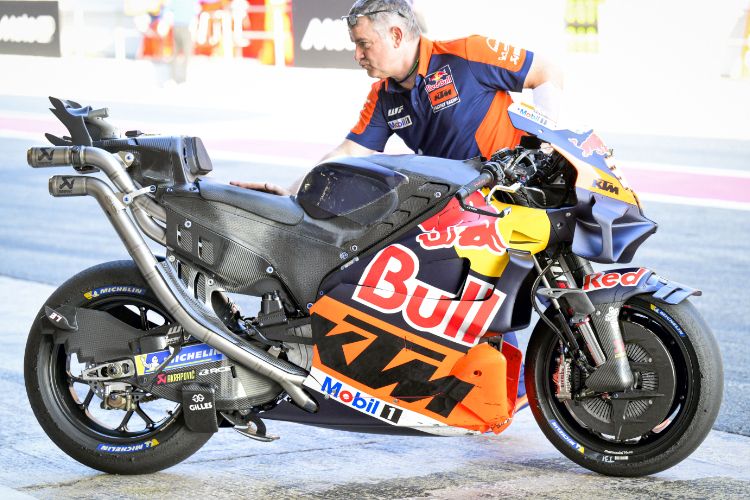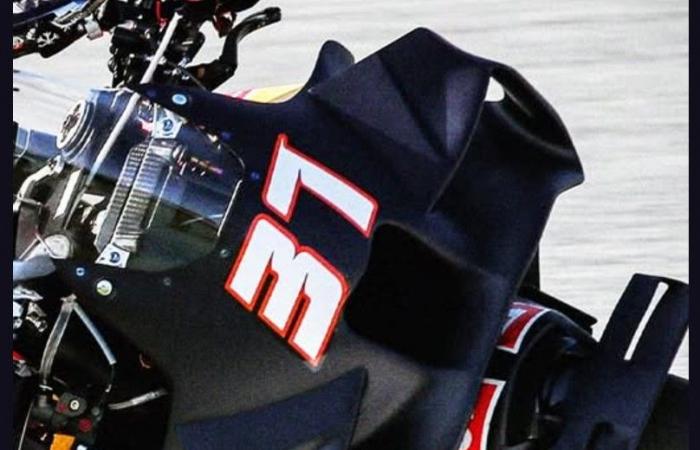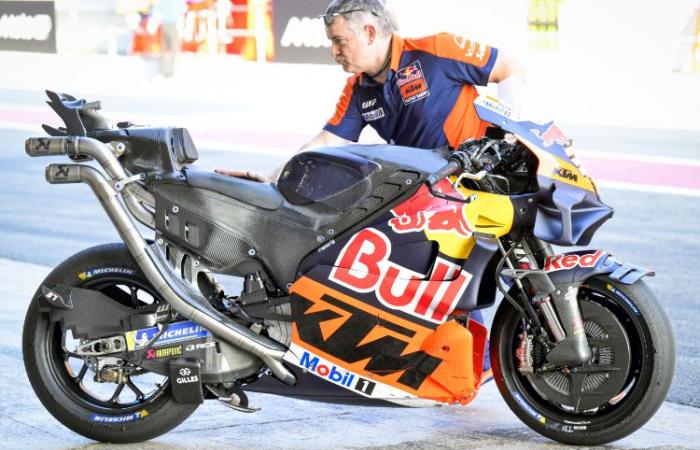Barcelona's post-season testing was full of surprises, and KTM undoubtedly stole the show. The Austrian brand has unveiled completely new aerodynamics, through a particularly minimalist front fairing, tested by Pedro Acosta.
During the
end of season testing in Barcelona,
KTM caused a sensation by unveiling a completely new piece in MotoGP: a minimalist dome tested by
Pedro Acosta. This sleek design, made almost entirely of transparent protective plastic, has caused bewilderment among competitors and raised many questions about its purpose and intentions.
The piece, mounted only on an all-black motorcycle driven by Pedro Acostawas so narrow and lacking in classical structure that other teams did not yet understand its purpose. While aerodynamic experts typically look to minimize airflow over the driver to maximize performance, this design seems to go against the grain.
Rivals have put forward hypotheses about the approach according to motorpasion. Among the latter, that of a simple preliminary test, KTM wanting to evaluate the basics of this design before deciding to continue its development this winter. Some believe that the dome could also be a decoy intended to distract attention from other, more significant improvements tested during the trials.
The fact that this dome was entrusted to
Pedro Acostaand not to more experienced pilots like Brad Binder or newcomers
Maverick Viñales et Enea Bastianiniunderlines the central place ofAcosta in the development of
KTM in MotoGP. This choice shows that
KTM relies on his young prodigy to experiment with daring ideas.
The mysteries of KTM: strategy or provocation?
Alternatively, this dome could aim to redirect airflow. It is possible that KTM seeks to channel air in a specific way to improve the stability or thermal management of the rider and the motorcycle. It could also reduce weight. A simplified design could be an attempt to further reduce the mass of the bike, even if it seems marginal.
However, this innovation raises questions. Letting more air reach the rider could increase aerodynamic drag, which goes against current trends. If this piece provides an advantage, its early unveiling before a winter break gives rivals time to copy it or find a countermeasure.
The idea that this dome is a decoy cannot be excluded. In MotoGP, where every detail is jealously guarded, revealing such a part so early could just be a way of distracting competitors or confusing the issue.
The real interest of this minimalist dome will only be confirmed Sepang tests, February 2025. And
KTM decides to continue in this direction, it could mark the start of a new aerodynamic approach in MotoGP. If, on the contrary, the coin disappears, this will confirm the hypothesis of an isolated test or a diversionary tactic.
With this minimalist dome, KTM once again demonstrates its desire to innovate and surprise. Whether this piece becomes a revolution or remains an experiment without follow-up, it has already succeeded in focusing the attention of the paddock on the Austrian team.
Come to Sepang to find out if this innovation will take off or if it will fade into the archives of daring ideas in MotoGP.








